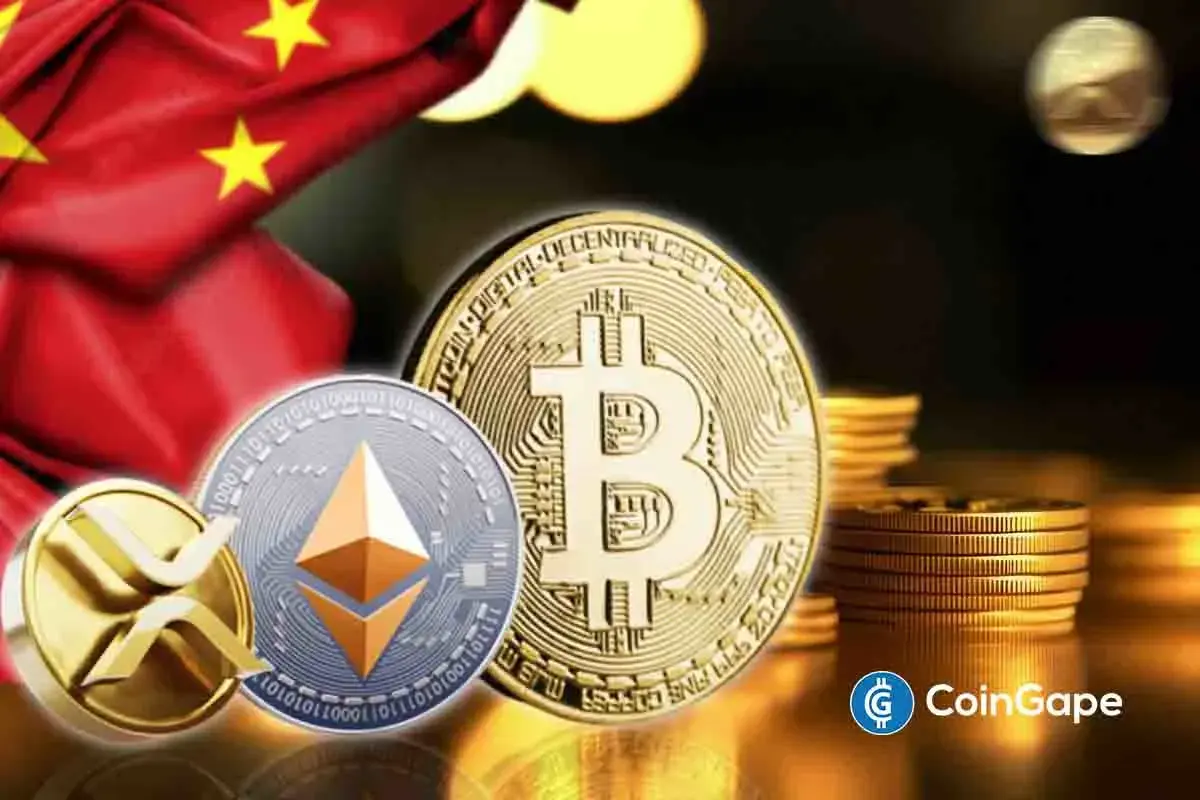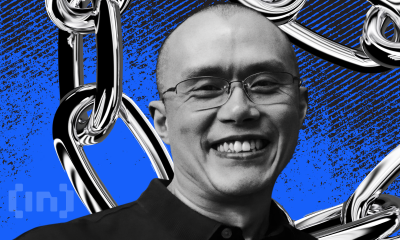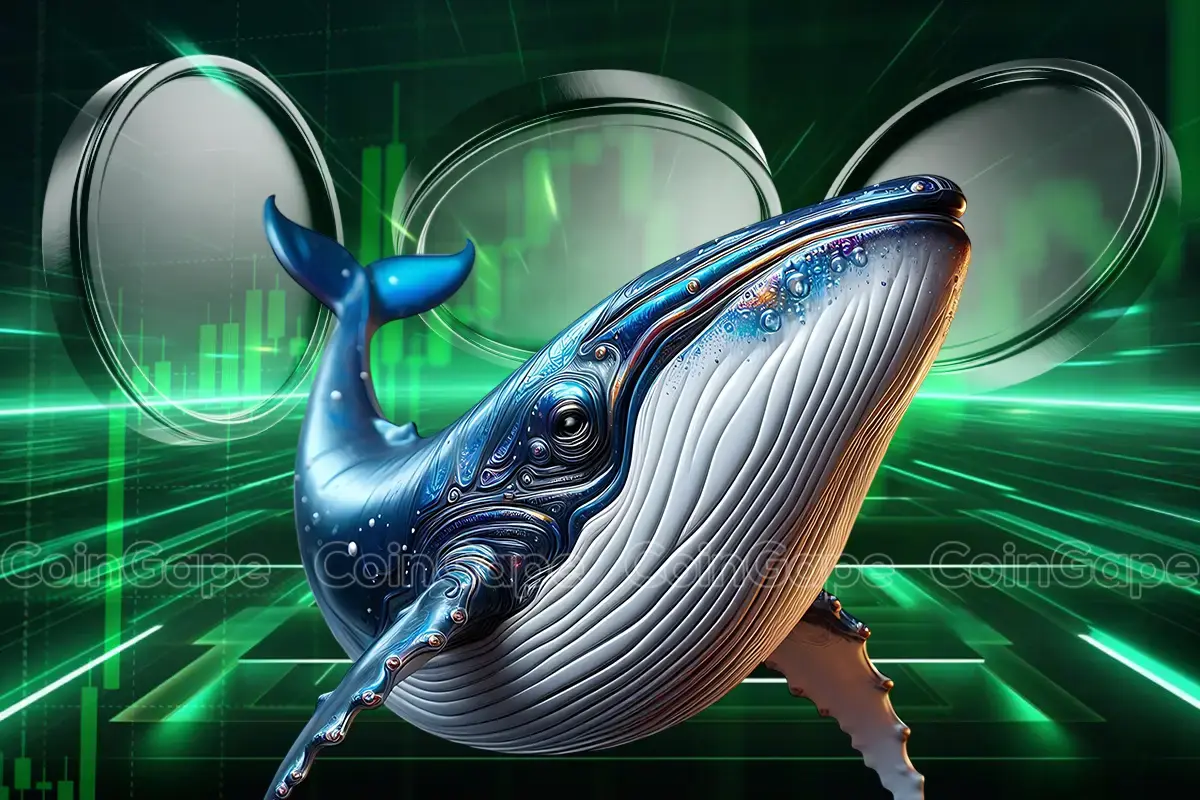Market
What’s Happening in DeFi? dYdX, 3Jane, MakerDAO, and More
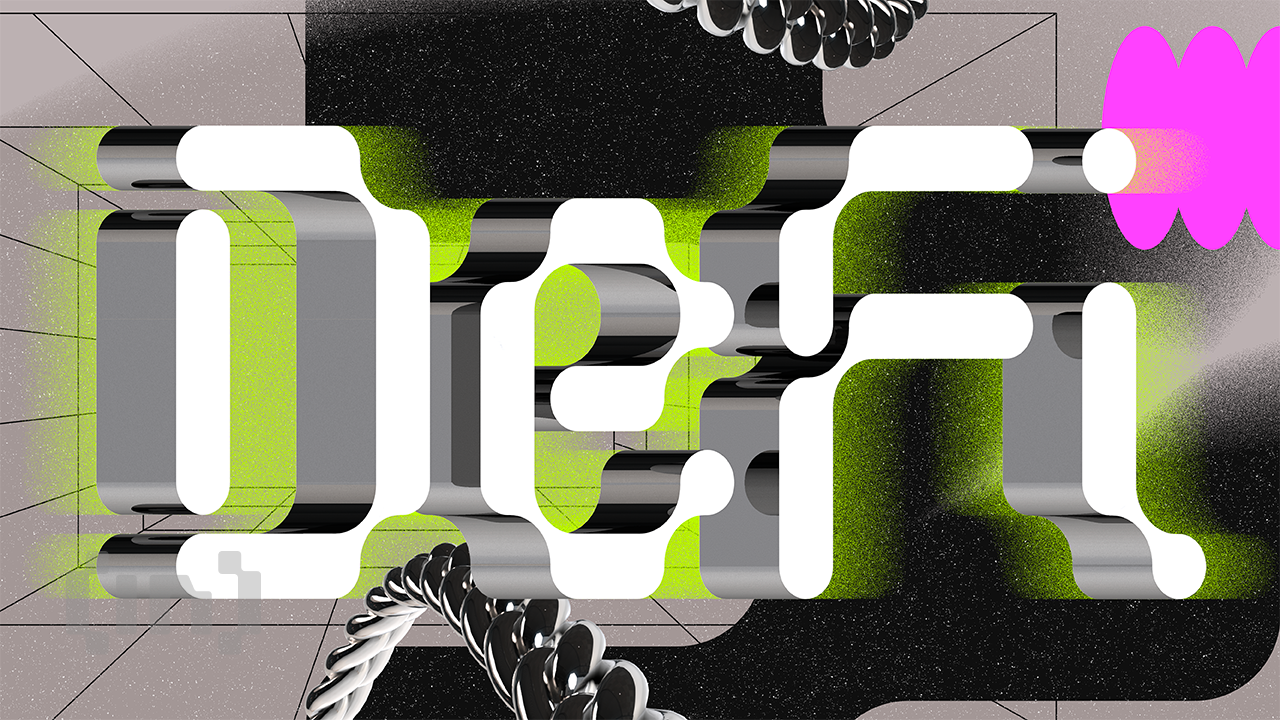
The decentralized finance (DeFi) sector continues to evolve, with several significant launches and updates making waves. BeInCrypto has examined the latest happenings, providing a comprehensive overview of the most noteworthy developments in the DeFi space.
From the launch of dYdX’s Android app to 3Jane’s derivatives yield layer, the sector is brimming with innovation and progress.
Term Structure’s Mainnet Launch
Term Structure has now launched its mainnet on Ethereum (ETH). This marks the debut of the first market-driven, institutional-grade fixed-income protocol. It is changing how lenders and borrowers manage liquidity in DeFi.
This platform lets users borrow tokens at fixed rates and terms using their liquid staking tokens (LSTs) and liquid restaking tokens (LRTs). They can also earn points and staking rewards. The auction mechanism in the primary markets facilitates borrowing and lending.
Additionally, the secondary markets offer a real-time order book. This feature enhances liquidity by supporting the trading of fixed-income tokens.
Read more: Top 11 DeFi Protocols To Keep an Eye on in 2024
With this launch, Term Structure aims to set new global standards in liquidity management. It enables users to lock in a fixed cost of funds. This move is crucial for leveraging opportunities to possibly earn higher floating annual percentage yields (APYs) or capitalize on token price appreciation.
“Our mainnet, designed to cater to institutional clients, traders, and retail investors, marks a pivotal development in DeFi. It allows users to leverage their digital assets with fixed rates and terms,” Jerry Li, Term Structure CEO, said.
Term Structure is a fixed-rate lending and borrowing protocol powered by a customized zero-knowledge (ZK) rollup, zkTrue-up. The Taiwanese DeFi platform specializes in non-custodial fixed-income protocols for peer-to-peer borrowing and lending.
dYdX Android App Launch and Chain Upgrade
On another front, dYdX, a perpetual trading decentralized exchange (DEX), now offers its app on Android. The app contains all the current features of the dYdX chain.
“dYdX Chain for Android includes some of your favorite features like 24/7/365 markets, 20x leverage, 65 Markets and counting, low gas fees, and so much more,” the dYdX team noted.
Additionally, dYdX revealed its upgrade to dYdX Chain v5.0. This software upgrade was scheduled for block 17,560,000 around June 6 at 15:16 UTC.
This decision followed a dYdX community vote, with 90% supporting the upgrade to version 5.0 and 98.5% voting in favor. The upgrade introduces several improvements: Isolated Markets, Batch order cancellation, Protocol-enshrined liquidity provider (LP) Vault, Slinky Sidecar/Vote Extension, Performance Enhancements, Soft Open Interest Cap, and Full Node Streaming. As per DefiLlama data, dYdX Chain’s total value locked (TVL) stands at $146.28 million as of this writing.
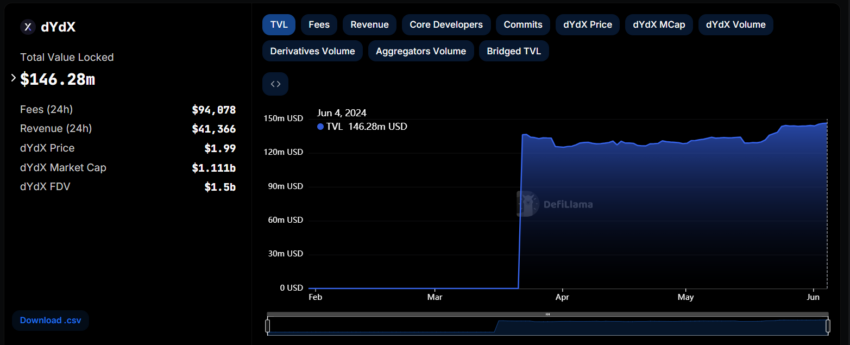
3Jane Revolutionizes Restaking with Derivatives Yield on EigenLayer
3Jane, a derivatives yield protocol, is live on EigenLayer. It unlocks a novel derivatives yield layer by enabling the collateralization of restaked ETH in derivatives contracts.
Chudnov Glavniy, founder of 3Jane, announced the protocol launch. According to Glavniy, the protocol unlocks a new derivatives yield layer for restakers by enabling the collateralization of restaked ETH in derivatives contracts, specifically call options.
“3Jane is the first ETH yield source for all EigenLayer assets and the first step towards ‘financializing’ EigenLayer by sourcing yield not just from [Actively Validated Services] AVS security but also from financial derivatives,” Glavniy explained.
The protocol enables collateralizing all exotic yield-bearing ETH and Bitcoin (BTC) variants across EigenLayer, Babylon Chain, and Ethena in options contracts. Users can wrap natively restaked ETH, restaked LSTs, ether.fi Staked ETH (eETH), Renzo Restaked ETH (ezETH), Ethena Staked USDe (sUSDe), and Savings DAI (sDAI) on 3Jane to earn additional options premium yield. 3Jane Vaults sell deep out-of-the-money options and accrue premiums to wrapped deposits.
Everclear: Connext’s Rebranding and Clearing Layer Introduction
Interoperability protocol Everclear has introduced the first “Clearing Layer” after rebranding from Connext. These layers coordinate transactions between chains, netting fund flows before settling them on the underlying chains and bridges. The live test net begins today.
The Chain Abstraction stack aims to solve fragmentation by eliminating the need for users to care about the chain they are on. However, it faces challenges in rebalancing and settling liquidity between chains.
Everclear addresses this issue by creating Clearing Layers. These layers coordinate market actors to net funds flows between chains before settling with underlying chains and bridges. They form the foundation of the Chain Abstraction stack, enabling seamless liquidity and permissionless chain expansion for protocols built on them.
Everclear reduces the cost and complexity of rebalancing by up to 10 times. The system is built as an Arbitrum Orbit rollup (via Gelato RaaS) and connects to other chains using Hyperlane with an Eigenlayer Interchain Security Module (ISM).
On average, about 80% of daily cross-chain capital flows are nettable. For every $1 bridged into a chain, $0.80 is bridged out. If solvers, market makers, and centralized exchanges coordinated, they could reduce bridging fees by more than five times.
TrueFi’s Deployment on Arbitrum
TrueFi is now live on Arbitrum, marking a significant expansion in partnership with Cicada Credit to bring on-chain credit to Arbitrum with market-neutral borrowers. The TrueFi team explained several reasons they chose Arbitrum.
“Arbitrum is the largest Layer 2 by TVL, number of DeFi protocols, and balance of stablecoins. According to L2beat, Arbitrum is the furthest along the path of decentralization. They are investing significant funds from their treasury into [real-world assets] RWAs, as seen in their recent STEP program, where we have also applied with Adapt3r Digital,” the team outlined.
In the coming days and weeks, TrueFi will share more about the pools’ specific configuration and details on each of the borrowers. The first two pools will be with Gravity Team and AlphaNonce, and many more will come.
Nostra’s NSTR Tokenomics and Launch Events
Nostra revealed their tokenomics for NSTR, featuring a total supply of 100 million tokens unlocked entirely at launch. NSTR will serve as the governance token for the Nostra ecosystem.
They plan to distribute 11% to the community through an airdrop. Launch events include an upcoming Snapshot, a Liquidity Bootstrapping Pool (LBP) running from June 10 to 13, and the Token Generation Event (TGE) on June 17.
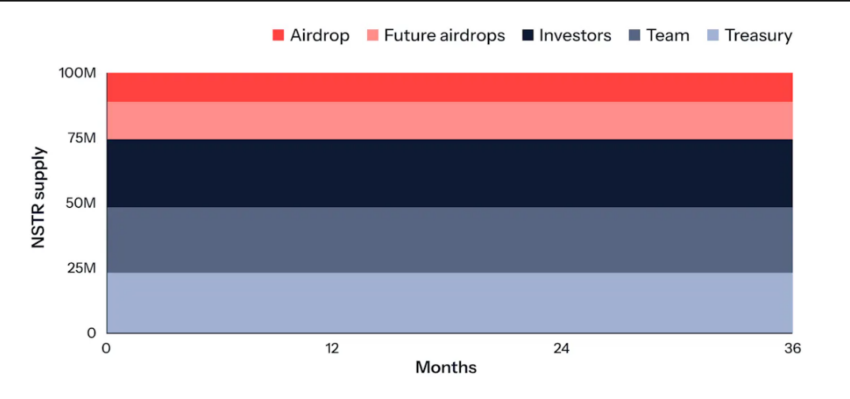
Nostra claims NSTR will be the fairest launch in DeFi. The Liquidity Bootstrapping Pool (LBP) pre-listing event aims to fund DEX liquidity.
They will airdrop tokens to the most active users and community members. All proceeds will go towards Treasury-owned DEX liquidity.
Solv Protocol Integrates Ethena for Yield Vault
Solv Protocol, a platform for optimizing yield and liquidity across major assets, has integrated Ethena to introduce the first yield vault for SolvBTC. This vault will enable users to earn yields from Ethena’s strategies while retaining exposure to Bitcoin.
Users can earn attractive yields with SolvBTC through two methods. Firstly, by utilizing Solv’s Yield Vaults, users can deposit their SolvBTC into these vaults to access premium yield sources such as BTC staking, restaking, and delta-neutral trading strategies.
Secondly, users can explore DeFi opportunities using SolvBTC across diverse DeFi protocols. This allows access to various yield-generating options, maximizing earnings within the vibrant DeFi ecosystem.
The ‘SolvBTC Yield Vault – Ethena’ is the first of many planned collaborations by Solv Protocol. These partnerships aim to introduce new yield sources and strategies to the expanding SolvBTC ecosystem.
MakerDAO’s New Proposal: Etherfi’s weETH into SparkLend
MakerDAO has opened a new proposal to onboard Etherfi’s weETH into SparkLend. weETH is the largest Liquid Restaking Token (LRT) on the market. It is also the only large LRT with fully enabled withdrawals, ensuring stable liquidity and a strong peg to ETH.
Phoenix Labs has proposed listing weETH to increase DAI borrowing on SparkLend, given the low competition for borrowing USD stablecoins using LRT collateral. The initial parameters and risk assessment are based on current market and liquidity conditions for weETH:
- Liquidation Threshold: 73%
“If approved, this change will be part of an upcoming Executive Vote in SparkLend,” the MakerDAO team said.
Read more: Identifying & Exploring Risk on DeFi Lending Protocols
These advancements emphasize the evolution of the DeFi sector, showcasing the relentless innovation and progress that are propelling the industry forward. With projects like dYdX, 3Jane, and MakerDAO continually breaking new ground, the future of decentralized finance appears exceptionally promising.
Disclaimer
In adherence to the Trust Project guidelines, BeInCrypto is committed to unbiased, transparent reporting. This news article aims to provide accurate, timely information. However, readers are advised to verify facts independently and consult with a professional before making any decisions based on this content. Please note that our Terms and Conditions, Privacy Policy, and Disclaimers have been updated.
Market
Cardano (ADA) Jumps 4% as Bullish Signals Emerge

Cardano (ADA) is up 4% on Monday, trying to hit $0.65, showing signs of renewed bullish momentum. Technical indicators are beginning to align in favor of buyers, with the BBTrend turning positive for the first time in days and the DMI signaling strengthening upward pressure.
ADA is also nearing a potential golden cross formation on its EMA lines, which could further support a breakout if resistance levels are cleared. With momentum building and key levels in sight, Cardano is entering a critical zone that could define its short-term direction.
Cardano Shows Early Signs of Recovery as BBTrend Turns Positive
Cardano BBTrend has just flipped back into positive territory at 0.11, following four straight days in the negative zone. This shift, though subtle, may be the first sign of momentum stabilizing after recent weakness.
BBTrend, or Bollinger Band Trend, is a technical indicator that gauges the strength and direction of a trend based on how wide or narrow the Bollinger Bands are.
When the bands begin to expand and BBTrend moves into positive values, it often suggests growing volatility in favor of an emerging bullish trend. On the other hand, prolonged negative readings typically signal fading momentum and a lack of directional strength.

While a BBTrend of 0.11 is still low and not yet signaling a strong uptrend, the fact that it turned positive marks a potential inflection point.
It suggests that selling pressure may be fading and the price could be entering a recovery phase if buying activity increases. This early uptick in BBTrend often precedes a broader move.
Traders will likely be watching closely to see if this positive shift is sustained in the coming sessions, as continued gains in BBTrend could indicate the beginning of a more defined upward move for ADA.
Cardano Buyers Regain Control as Uptrend Shows Early Strength
Cardano Directional Movement Index (DMI) is showing a notable shift in momentum, with its Average Directional Index (ADX) climbing to 17.79, up from 13.77 yesterday.
The ADX measures the strength of a trend, regardless of its direction, on a scale from 0 to 100. Values below 20 suggest a weak or non-existent trend, while readings above 25 typically confirm that a trend is gaining strength.
ADA’s ADX is still below the 20 threshold but rising steadily—indicating that momentum is building and a stronger directional move could soon take shape.

Looking deeper, the +DI (positive directional indicator) has jumped to 26.38 from 16.30 just a day ago, signaling increased buying pressure. Although it has slightly pulled back from an earlier peak at 29.57, it remains firmly above the -DI (negative directional indicator), which has dropped significantly from 22.72 to 13.73.
This widening gap between the +DI and -DI suggests a clear shift in favor of bulls, with buyers regaining control after a brief period of selling pressure.
If the ADX continues to rise alongside a dominant +DI, it could confirm a strengthening uptrend for Cardano.
Cardano Nears Golden Cross as Bulls Eye Breakout—but Key Support Still in Play
Cardano price is approaching a potentially bullish technical development, as its EMA lines suggest a golden cross may form in the coming sessions.
A golden cross occurs when the short-term moving average crosses above the long-term moving average, often signaling the start of a stronger uptrend.
If this crossover is confirmed and ADA manages to break above the resistance at $0.668, the next upside targets sit at $0.709 and $0.77—levels not seen since late March.
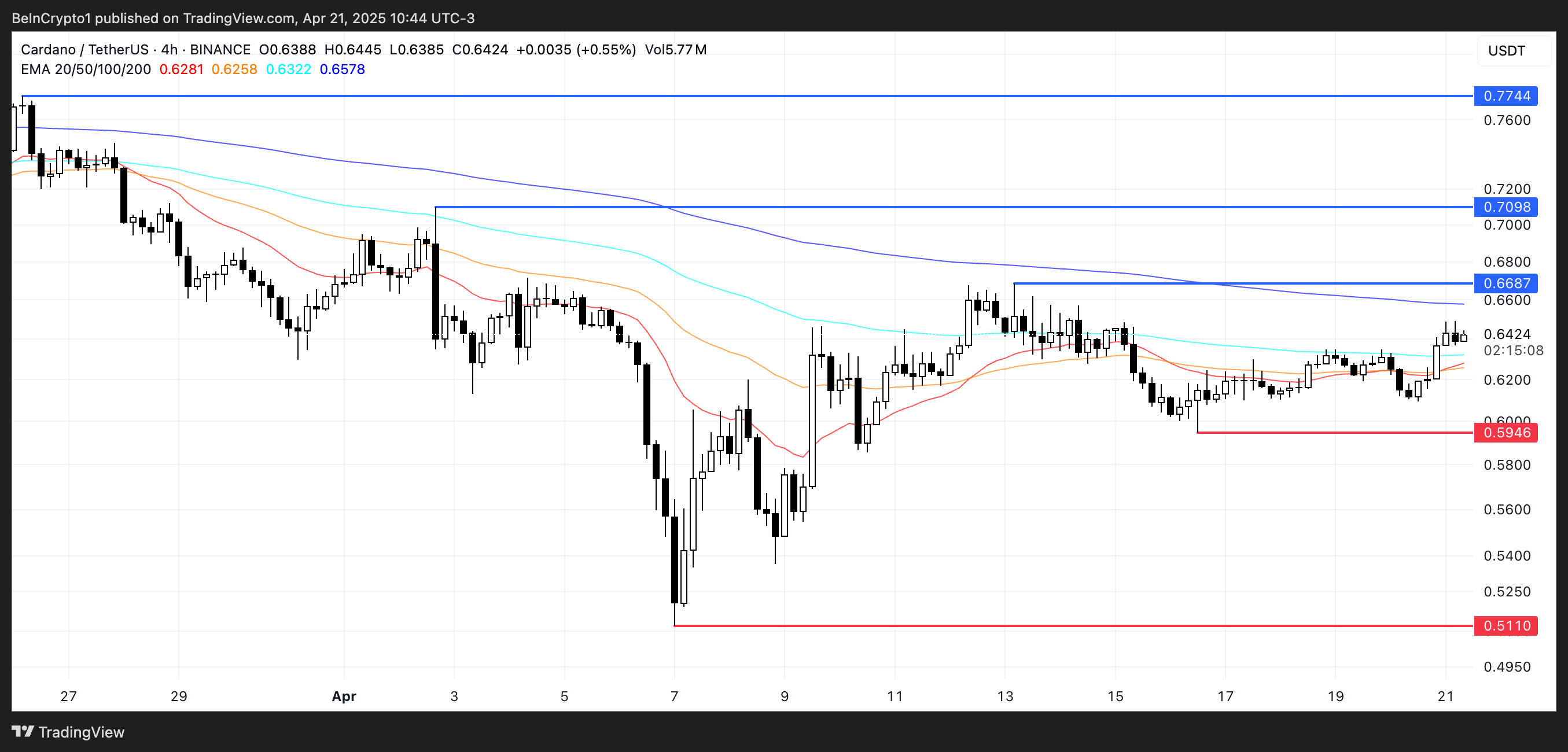
However, if ADA fails to maintain its upward trajectory and the momentum fades, downside risks remain in play.
A drop back toward the $0.594 support would be the first sign of weakness, and a breakdown below that level could expose the asset to deeper losses, with $0.511 as the next key support zone.
Price action around the $0.668 resistance will likely be the deciding factor.
Disclaimer
In line with the Trust Project guidelines, this price analysis article is for informational purposes only and should not be considered financial or investment advice. BeInCrypto is committed to accurate, unbiased reporting, but market conditions are subject to change without notice. Always conduct your own research and consult with a professional before making any financial decisions. Please note that our Terms and Conditions, Privacy Policy, and Disclaimers have been updated.
Market
Bitcoin ETFs Dominate Market Despite 72 Altcoin Proposals

As the SEC is signaling its willingness to approve new altcoin ETFs, 72 active proposals are awaiting a nod. Despite the growing interest from asset managers to launch more altcoin-based products in the institutional market, Bitcoin ETFs currently command 90% of crypto fund assets worldwide.
New listings can attract inflows and liquidity in these tokens, as demonstrated by Ethereum’s approval of ETF options. Still, given the current market interest, it’s highly unlikely that any crypto found will replicate Bitcoin’s runaway success in the ETF market
Bitcoin Dominates the ETF Market
Bitcoin ETFs dramatically changed the global digital assets market over the past month, and they are performing quite well at the moment. In the US, total net assets have reached $94.5 billion, despite continuous outflows in the past few months.
Their impressive early success opened a new market for crypto-related assets, and issuers have been flooding the SEC with new applications since.
This flood has been so intense that there are currently 72 active proposals for the SEC’s consideration:
“There are now 72 crypto-related ETFs sitting with the SEC awaiting approval to list or list options. Everything from XRP, Litecoin and Solana to Penguins, Doge and 2x MELANIA and everything in between. Gonna be a wild year,” claimed ETF analyst Eric Balchunas.
The US regulatory environment has become much friendlier toward crypto, and the SEC is signaling its willingness to approve new products. Many ETF issuers are attempting to seize the opportunity to create a product as successful as Bitcoin.
However, Bitcoin has a sizable head start, and it’s difficult to imagine any newcomer disrupting its 90% market share.

To put that into perspective, BlackRock’s Bitcoin ETF was declared “the greatest launch in ETF history.” Any new altcoin product would need a significant value-add to encroach upon Bitcoin’s position.
Recent products like Ethereum ETF options have attracted fresh liquidity. Yet, Bitcoin’s dominance in the institutional market remains unchanged.
Of these 72 proposals, only 23 refer to altcoins other than Solana, XRP, or Litecoin, and many more concern new derivatives on existing ETFs.
Some analysts claim that these products, taken together, couldn’t displace more than 5-10% of Bitcoin’s ETF market dominance. If an event significantly disrupted Bitcoin, it would also impact the rest of crypto.
Still, that doesn’t mean that the altcoins ETFs are a futile endeavor. These products have continually created new inflows and interest in their underlying assets, especially with issuers acquiring token stockpiles.
However, it’s important to be realistic. While XRP and Solana ETF approvals could drive new bullish cycles for the altcoin market, Bitcoin will likely dominate the ETF market by a large margin — given its widespread recognition as a ‘store of value’.
Disclaimer
In adherence to the Trust Project guidelines, BeInCrypto is committed to unbiased, transparent reporting. This news article aims to provide accurate, timely information. However, readers are advised to verify facts independently and consult with a professional before making any decisions based on this content. Please note that our Terms and Conditions, Privacy Policy, and Disclaimers have been updated.
Market
Coinbase Lists RSR, Atkins Association Fuels Bullishness

Coinbase is listing Reserve Rights (RSR), a dual‑token stablecoin platform aimed at creating a collateral‑backed, self‑regulating stablecoin ecosystem. Following the announcement, Binance’s ‘smart money’ traders are increasing long positions on the altcoin.
Incoming SEC Chair Paul Atkins was an early advisor for RSR, but he doesn’t maintain any active connection to the project. Nonetheless, RSR speculators may be anticipating some benefits from this old association.
Coinbase Lists RSR To New Enthusiasm
RSR has been active since 2019, aiming to upend the stablecoin ecosystem. It’s an ERC‑20 utility and governance token that underpins the Reserve Protocol, a dual‑token system designed to back and stabilize the Reserve stablecoin (RSV) at a $1 USD peg. RSR, a non-stablecoin, provides governance and backstop insurance to its counterpart.
The asset’s valuation peaked in 2021 but has been quiet since then until regaining prominence in 2024. Today’s Coinbase listing announcement saw RSR jump nearly 10%.

Coinbase first announced that it would list RSR a little under three weeks ago. Coinbase listings usually cause the underlying tokens to spike, and this has been no exception.
However, an intriguing side effect has also taken place. As the asset prepares its debut on Coinbase, top traders on Binance are showing a strong bullish positioning.

On Binance, the top‑trader long/short ratio measures the share of total open positions held as longs by the top 20% of accounts by margin balance. A 65.48% long ratio means these “smart money” participants are overwhelmingly betting prices will rise.
Meanwhile, beyond Coinbase listing, RSR is getting attention due to its link with incoming SEC Chair Paul Atkins. Although Atkins disclosed his crypto investments and has no current link with RSR, he joined the Reserve Rights Foundation as an advisor in its early stages.
Since Atkins succeeded in his confirmation hearing, RSR posted an impressive 22% rally. Technically, he hasn’t been seated as Chair yet, but traders are evidently expecting bullish developments.
Atkins has promised to bring crypto-friendly reform, and this connection could disproportionately impact his former associates.
That isn’t to say that anyone has alleged that Atkins will engage in corruption to unfairly boost RSR. However, since becoming President, members of Trump’s family have been involved in several controversial crypto deals. This precedent may be encouraging traders to believe in the importance of political connections.
For now, market narratives are very important in this industry. As Atkins officially begins his career as the SEC’s new Chair, RSR may continue to receive indirect benefits.
Disclaimer
In adherence to the Trust Project guidelines, BeInCrypto is committed to unbiased, transparent reporting. This news article aims to provide accurate, timely information. However, readers are advised to verify facts independently and consult with a professional before making any decisions based on this content. Please note that our Terms and Conditions, Privacy Policy, and Disclaimers have been updated.
-

 Bitcoin17 hours ago
Bitcoin17 hours agoUS Economic Indicators to Watch & Potential Impact on Bitcoin
-

 Bitcoin23 hours ago
Bitcoin23 hours agoHere Are The Bitcoin Levels To Watch For The Short Term
-
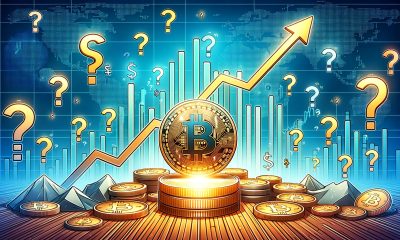
 Market20 hours ago
Market20 hours agoBitcoin Price Breakout In Progress—Momentum Builds Above Resistance
-
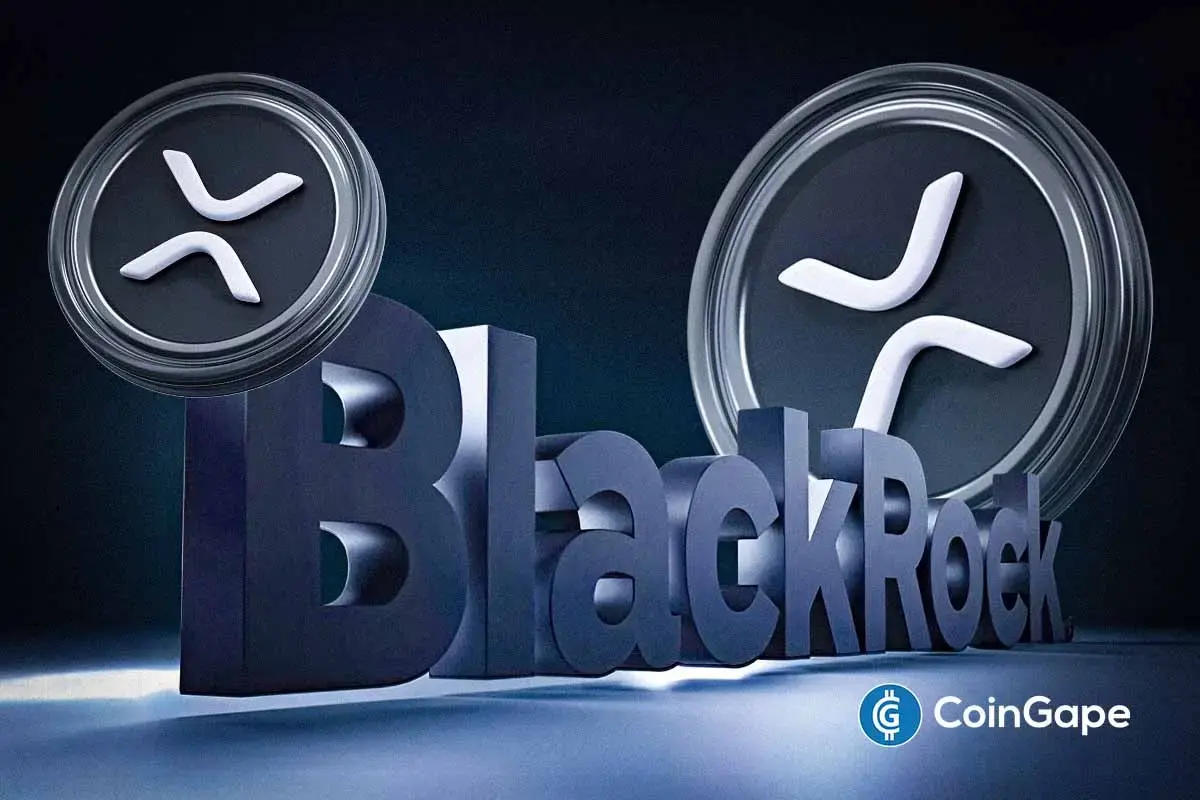
 Altcoin15 hours ago
Altcoin15 hours agoExpert Reveals Why BlackRock Hasn’t Pushed for an XRP ETF
-

 Altcoin20 hours ago
Altcoin20 hours agoExpert Says Solana Price To $2,000 Is Within Reach, Here’s How
-

 Market18 hours ago
Market18 hours agoSolana Rallies Past Bitcoin—Momentum Tilts In Favor of SOL
-

 Market17 hours ago
Market17 hours agoVitalik Buterin Proposes to Replace EVM with RISC-V
-

 Bitcoin15 hours ago
Bitcoin15 hours agoSolana, Bitcoin in Texas, and Initia



